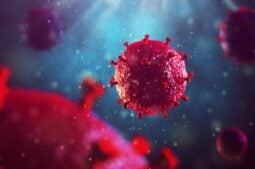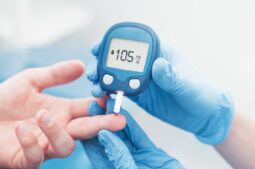
In a normal menstrual cycle, there is a window of five days or so in which you can conceive. This is because one of the prerequisites for conception and pregnancy is the presence of a mature egg waiting to be fertilized. There are lots of ways for women who want to become pregnant to work out the point in their menstrual cycle when they will be at their most fertile.
In this article we look at the details of follicle scans: what can you expect from a follicular study ultrasound normal report and how do you interpret your follicular scan results? To sum it up: What is follicular monitoring and how does it work?
What is a Follicle Scan?
A follicle scan, also known as a follicular study or an antral follicle count, is a type of ultrasound performed to measure various aspects related to ovarian follicles.
Ovulation prediction can be achieved by keeping a diary of your period dates, by daily monitoring of your temperature or by using an ovulation predictor kit like a pregnancy test. However, more reliable than any of these is monitoring by means of a follicle scan.
A follicle scan monitors what is happening before ovulation is reached, so that in future cycles, it can be predicted with accuracy. Ovulation normally occurs around 14 days before the start of your next period, providing you have a normal and regular menstrual cycle.
What does a follicle scan measure?
The follicle scan measures several parameters:
- Number of follicles
- Size of follicles
- Growth rate
Here’s what the scan can measure before ovulation:
- During the late luteal phase (after ovulation but before your next period) of your cycle, when several follicles start to develop to around 2–5 mm, forming a population from which the dominant follicle will eventually emerge.
- During days 1 to 5 of the next cycle, with day 1 being the start of your period, the second stage of ‘recruitment’ begins, when some are selected to continue their growth to around 5–10 mm, while the rest wither and are reabsorbed. At this stage it is impossible to tell which of the selected few will become dominant.
- In days 5 to 7, the process of ‘dominance’ starts. One of the follicles takes over and actively suppresses the growth of all the others. This is the one that will ovulate. It grows at a rate of 2–3 mm each day, eventually reaching a size of 17–27 mm just before ovulation.
At the point of ovulation, this dominant follicle splits. It releases the mature egg to begin its journey down the fallopian tube.
This is the journey from immature follicle to final released egg at ovulation which the follicular monitoring scan is measuring.
How does a follicle scan work?
Ultrasound monitoring has been used for follicle evaluation since back in 1978. However, a major advance was made between 1983 and 1985, when it was discovered that transvaginal sonography gave much more accurate results than the previous external method. This is now the preferred method for follicle scanning. For this method, a doctor inserts the lubricated ultrasound wand 2–3 inches inside your vagina. He may turn it gently to provide a full picture of the ovaries and surrounding organs. The procedure is like a smear test, but less uncomfortable because the wand is not pressed against your cervix. It is generally reckoned to be painless.
Two or three scans are normal during a single menstrual cycle, carried out between day 9 and day 20. A normal follicle scan report will show how many follicles with the potential for maturity are available during the menstrual cycle.
Why have a follicle scan?
Quite often, follicle scans are used to help a couple to conceive naturally by pinpointing the exact time that intercourse is likely to result in conception. An initial scan on day 9 or 10 of the cycle shows the size of follicle and thickness of the endometrium. When the dominant follicle reaches 18 mm in diameter and an ovulation predictor kit confirms a surge of luteinizing hormone which triggers ovulation, the couple is advised to have intercourse for three consecutive days starting on the same day.
Although it is helpful in assisting natural conception, a follicle scan is also a crucial step in the process of fertility treatment, either for a simple treatment like Artificial Insemination (AI) or the more complex but well-established treatment of In Vitro Fertilization (IVF).
Follicle monitoring for Artificial Insemination
During an AI fertility treatment, fertility doctors will be monitoring both the development of the ideal number of follicles. It is limited to a small number because of the risks of multiple births. They also measure the thickness of the endometrium as an indicator of its readiness to receive an embryo. Medications to encourage and control the readiness of the ovarian follicles are carefully balanced because of the follicular monitoring to stimulate the desired outcome. At this point, the maturing follicles, the oestrogens they are producing and the resulting changes in the uterine lining need to be carefully balanced. They can then work together to create the ideal environment for the introduction of a prepared semen sample to facilitate conception.
Follicle monitoring in IVF treatment
Many of the same principles apply during an IVF treatment. A different hormonal medication protocol encourages the production of as many mature eggs as appropriate for the patient. This may vary between 3 and 11. The hormonal medication ensures that the process of a dominant follicle for ovulation will be prevented. Instead, the purpose of the medication is to encourage an adequate number of follicles to develop into mature eggs that can be retrieved from the ovaries for fertilization in the laboratory.
Several follicular scan results are part of the standard procedures employed by fertility doctors, as with AI, to determine the ideal circumstances for egg retrieval and subsequent transfer of an embryo back to the uterus.
Finding out more about follicle scans at IVI
Follicle tracking trying to conceive is essential. If you’d like to find out more about how we use the latest technology and techniques, including follicle sonography, during the course of a fertility assessment or fertility treatments at IVI, just get in touch using our online contact form.





Comments are closed here.